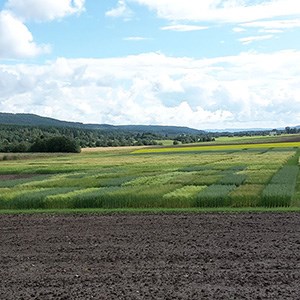Contact
Department of Crop Production Ecology, Crop production science

Cereal cultivation is a major share of agricultural production in northern European countries. Dependency of agricultural production on climate factors make agriculture an uncertain profession considering projected climate in coming decades. Such uncertainties have been observed in the recent past with inter-annual climatic variability and thus the crop yield.
Northern European climate possess exceptional features and conditions such as short crop cultivation duration, narrow sowing window, high risks of early and late season night frosts, high risk of early summer drought and excessive precipitation close to harvest. It is projected that the progress of climate change in the northern hemisphere will be faster compared to other parts of the world. The future climatic conditions indicate changes in cropping systems, cultural practices, shifting agricultural lands and genotypes in the region. This requires focus on identifying technologies to reduce production risks in current climatic conditions and improve resilience and adaptive capacity for future conditions in the region. In line with such considerations, this project aims to focus on evaluations of production risks of cereals (initially barley and oats) with current management practices and suggesting agronomic and genotypic adaptation strategies for better production in current and future climate conditions.
The project links field experiments and a modelling approach to deliver the objective. Field experiments will be conducted at four sites in northern Sweden (Röbäcksdalen, Öjebyn, Offer and Ås) with diverse growth and development behaviours of 12 barley and 5 oat varieties. Detailed growth and development measurements of the varieties of both cereals will be recorded from the field experiment of Röbäcksdalen to train (calibrate) the APSIM crop model. The model validation will be done with data from the other three field experiments. With the detailed routines of agronomic and cultivar specific options in APSIM, the trained and validated model will be used to simulate productions risks with current and future climate conditions. The simulations will be performed further to identify and suggest best agronomic and genotypic adaptations to reduce the risks and increase production in the current and future climatic conditions.